#Darkroom core
Text
Today's aesthetic is darkroomcore










#aesthetics#aesthetic#aesthetic blog#aesthetic otd#aesthetics blog#aesthetic community#aesthetic blogs#Darkroomcore#Darkroom core#Dark room core#restaurant interior design
130 notes
·
View notes
Text

Lettering on analog portrait of a cat named Birba
#photography#photographyart#analogic film#analogic photography#fotografia analogica#darkroom#analog#analog portrait#analog project#cats of tumblr#cat#feline#lettering#graphicwork#graphic art#graphic design#sludge metal#metal#core#weird core
1 note
·
View note
Text
bowstring (nancy, jonathan/nancy)
rating: light teen
word count: 3,857
(No one asks the bow if it hurts to hold such tension at its delicate tips. Nancy brushes the thought away; she can cope with pain.)
missing scenes and missing thoughts in nancy’s head through season 4, vol. 1
read on ao3
She’s wound up. She can feel it between her shoulder blades and hear it in the pitch of her heels clicking across the classroom floor. She can tell by the looks her classmates give her that she’s not hiding it well; or at all.
Nancy Wheeler always had good posture, instilled while wearing pale pink tights and leotards in ballet class. But her spine is straighter than ever, her back muscles taut, her shoulders sharply squared. She holds her head high, the cant of her chin almost haughty. It is her armor.
It hurts, but control is more important than the pain. It’s just about all she has left.
++++++
It started in October.
(It started before then, in a newsroom full of sexist, arrogant adults she couldn’t simply tell to fuck off, but it was different then. Jonathan was there to let her emotions and her insides find some slack again, to loosen up and allow her to breathe. In the darkroom, in his car, in their bedrooms long past sunset, his voice and eyes and hands and breath let her loosen bit by bit until she was herself again, strong at the core and soft around the edges, human and happy.)
She watches the taillights of his battered old Ford fade down the Byers’ (former) driveway and feels the tug start in the middle of her back. His car rattles and shakes, she can feel it under her legs even though she’s standing, and he is already far, so far, and about to be further.
(Why California? she asked him in the quiet dark of his room. Why so far?
Because it’s far, was his reply. As far as they can take us. They say it’s to make sure we’re safe.
A sob caught in her throat; a ringing, something like grief, in her ears.)
Ever since that night in the forest, the night with the deer and the hole in the tree and its impossible exit, she’s been convinced there’s a tether between them, tying them together. That’s why she could hear his voice and find her way back.
It’s not a cord; it’s strong, stronger than natural fibers like cotton and silk. No, more like a bowstring, light but stronger than you’d ever believe; Kevlar or Dyneema, prized because it can hold immense pressure and tension but resist snapping or fraying as it launches arrow after arrow.
He made her a promise; she made one in return. She can let their bowstring draw back, draw taut, hold the pressure for her. That it stretches farther now is not an issue; the larger an archer’s bow, the greater the distance between where the bowstring is tied, the more powerful a weapon it is, the further its arrows can reach.
(No one asks the bow if it hurts to hold such tension at its delicate tips. Nancy brushes the thought away; she can cope with pain.)
++++++
She runs The Weekly Streak with an iron fist and sort of hates herself for it.
It wasn’t that way to start with, but neither was senior year. Her life was full, she was happy, there were no cold empty places behind her ribs spreading their icy fingers to the rest of her heart.
But then… and yeah. Now there’s nothing else but getting the fuck done with this, getting the fuck out of here, getting to college and restarting her life, with Jonathan and without monsters.
She is not kidding when she warns Fred of the speed at which she’s gone through managing editors. In those moments, breaking her classmates one at a time, she catches glimpses of Bruce and Tom in herself and she hates it. Hates them, hates herself for emulating them even subconsciously. But she can’t stop it.
There are no bedrooms after school that aren’t hers anymore; no record players spinning lazily, no lips brushing together in time with the beat. There is the Streak and there is college and there is the tick tick tick ticking clock to the end of the year and graduation and reunification.
(That clock was supposed to tick tick tick to spring break, that was meant to be the relief for this endless creaking ache in her upper back, but that’s not happening. Not anymore. Because he isn’t coming, won’t come. And won’t say why.)
Emerson is impressed with her grades, impressed with her writing, impressed with her run of the Streak, and accepts her without hesitation. There. Done. Finished. No more work and no more worrying.
(Well, except about Jonathan, that is. Jonathan who gave an incredulous Emerson? over the crackling long distance connection when she announced her early decision plans.
It’s perfect, she’d argued. It’s got a great journalism school and it’s got one of the best photography programs in the country. And it’s right in the middle of Boston so we’ll be in a big city, even if it’s not the big city. Plus, they have co-ed dorms.
Yeah but, I mean, he’d trailed off, like he was holding something back. It made her chest feel noxious, tight. You never even mentioned…
I did the research. It’s perfect for us. And I’ve already sent my application in for early decision.
He’d changed the subject and she’d let him. But it would be fine, she’s sure of it. His grades have always been as good as hers. He’s a wonderful photographer. They’d be insane to reject him.
And him, he wouldn’t reject her. He wouldn’t.)
She tells herself it’s because she’s busy after school with the paper, never there to take his calls anyway, but she notices them become less frequent. Shorter and vaguer, too. Sometimes there are voices in the background that aren’t Will and El, music she doesn’t recognize.
He tells her about his friend Argyle, often sounds distant and fuzzy when he does. She wonders what he’s not telling her. It’s adding weight, pounds per square inch, to their tether; it’s planting seeds of fear in her gut.
She wonders if it’s another girl, or girls, but he keeps saying I love you without hesitation and with feeling in his voice so she shoves those thoughts down as best she can. She remembers the Halloween party, catching a glimpse of him out of the corner of her eye as he smiled at a girl in a short black wig with a heavily painted face. Remembers how that made her heart twist and her stomach drop, how it sent her spinning on the dance floor to fling the feelings away, sent her back to the bowl of punch to make sure they drowned. It didn’t work then and it’s not working now but she ignores it with all her might and all her faith in him; she won’t be shaken.
Every time she asks, he talks around and away from college, and that makes her stomach churn with acid, with fear. Fears that are reasonable, reasons that are fears, and a kernel of truth underneath it all she is determined to ignore because if she confronts it means she will have to make a sacrifice for him this time, give up something she wants for the sake of both of them and he hasn’t made her do that before.
(She thinks about an angry car ride, a fight, the anger in her voice when she told him You don’t understand. The disgust in his when he spat back Neither do you.
He’d apologized. She’d let it go. She wonders now if she is hearing him properly for the first time. She wonders now what he isn’t saying that would come out in that tone.)
++++++
If she was willing to look at herself closely, she’d admit she’s becoming sour. Bitchy.
She snaps at Mike for anything and everything. He’s an annoying little shit, to be sure, but he’s also conveniently there for her to take it out on.
She’s not entirely sure what it is she’s taking out on him. Frustration, with Jonathan but also with life. With the fact that she still has to convince her parents, her peers, her boyfriend, herself that what she wants really is more important.
(It’s all the words she’s holding in, the fears, the admissions. I miss—her brain starts, and she shuts it down. No weakness.)
She’s not like her mother, she refuses to be like her mother. She will do everything in her power to make sure she doesn’t turn out like her mother.
But that fight for that future she knows she deserves, it is lonely, lonelier by the day. There is no warm palm in hers anymore to help her navigate the rocky shores of whatever lies ahead.
(I really don’t need a Jonathan Byers Pep Talk right now, she’d snapped at him, but she does. She needs one so badly. But there’s a three-hour time difference and the phone rings and rings and then the answering machine picks up instead.)
With distance comes coldness, with coldness comes numbness, and she begins to forget that her back didn’t used to be up against a wall, it was always up against him, bony shoulder blades and fine muscles, hardness where you can’t see it and softness where you don’t expect it. His eyes in the back of her head.
Mike reads his letters from Eleven, and she doesn’t dare say she’s jealous.
The wall at her back now makes her stiff, makes her unyielding. She still wears her soft sweaters and frilly skirts, but her core has been infected with Medusa’s stare. She feels herself turning to stone.
She is practiced enough in her makeup that she doesn’t look in the mirror much anymore.
++++++
“You’re not Jonathan,” she tells Fred, who smirks back at her.
“No, I’m here. Present and accounted for.”
She wants to wipe that smirk off his face with something sharp, like words or a bat full of nails.
Which just makes her feel sick when she’s standing over his body, broken and twisted, horrible in ways she could have never dreamed, in the middle of the road.
She’s horrified, terrified, and her stomach churns with guilt. Sniveling shit that he was, no one deserves anything like this. It makes her heart pound, and she feels weighted and lost, unmoored in fear and grief. She keeps her hands tucked close to her body; she wants to reach out for fingers to hold, to keep her grounded, keep her safe, but they’re not here. They’re 2,000 miles away and reaching out only to find air will only make the hurt worse.
She hears tires slowing to a stop and for just a moment she lets herself believe that when she looks up, she’ll see a rusty, brown, barely functioning boat of a Ford. That he’s come after all – surprise! – and just couldn’t afford the plane ticket or something. Because he was always there before; always in the right place, ready to pick up her pieces, put her back together. To be her glue.
She raises her eyes and finds Steve, Robin, Dustin and Max halfway out of Steve’s car, staring at her. Disappointment drips down her spine, but there’s relief there too. She’s not quite sure if they’re friends, but they know. They know all of it. She won’t have to lie. She won’t have to convince. They’ve seen it with their own eyes.
They’ll help her.
She raises her hand in a tiny wave. Steve raises his back.
There is no scar bisecting that palm, but still. It’ll do.
++++++
It’s been a long time, Nancy realizes, since she had a friend.
First her only friend was Barb, and then her only friend was Steve except he was her boyfriend and she didn’t really want him to be either; his silhouette shadowed with Jonathan’s behind her eyelids, her dreams letting her sub in the person she really wanted to talk to, cry with, kiss.
And then her only friend was Jonathan, and he was also her boyfriend, her future, her everything (and is she sure he ever believed that? He made his vow to her, so she thinks perhaps he did), and then he was gone too.
Now it’s Robin, chattering inanely, unable to let a single thing pass by without comment and remarking on some other things too, things Nancy doesn’t want to think about, doesn’t want to revisit; things in a past she has been more than content to keep there. And wouldn’t this have been easier if they had all just been friends already?
Every word, every comment makes her shoulder blades draw together, puts more pounds per square inch on a bowstring she fears may be starting to fray. It should be impossible, but the weight creaks. It makes her neck ache, and she rolls her head from side to side to try to relieve it.
Steve seems to get it, seems to understand she’s not one person anymore, she’s two put together, even if she keeps catching him staring at her profile when he thinks she isn’t looking.
But when Robin isn’t talking about Steve she’s nice, and she’s smart, and she’s occasionally even funny and Nancy doesn’t mind that she’s there. Likes it even.
(She just wishes for the quiet, for a pair of brown eyes that see her and a pair of soft ears that hear her, and a brain that has always given her the benefit of the doubt, even in the lobby of a funeral home when choosing his little brother’s casket. She and Jonathan didn’t need to discuss every step of every plan every minute of every day; they knew. She misses a partner who trusts her. She misses him. She still bites the words back and refuses to say them aloud.)
Still, it feels good to have something like a friend again.
++++++
She has called Jonathan a dozen times now and has only gotten a busy signal in return and it is making her want to scream.
Scream in frustration, in anger, in petty defiance. In how dare you be ignoring me, do you understand how serious things are here???
And in fear, in terror, because she knows Jonathan, knows Joyce and Will and Eleven, knows her own goddamn brother, and there is no reason that house phone should be busy, should be not even ringing every single time.
Someone has cut the phone line, her mind whispers to her in the cool dark of her bedroom. They’re all dead, phone off the hook to call 911 but unable to, and no one has found them yet.
She holds tight to the anger, lets it draw her back and shoulders higher and tighter, because if she doesn’t she will break, she will fold, she will call the cops and blow their cover.
They didn’t move, she reminds herself, they were relocated. For their safety. For their lives. She can’t call the police now, can’t tell them everything about how the government is looking for their adopted little sister, how they might be in danger. Especially not from here, not from Hawkins, where she knows shadowy men in ties and glasses listen to every phone call. Shadowy men in suits who are probably looking for them, looking for El. She can’t be the one to give them away.
But right now, in her basement, are five people, one of whom is in very real danger. In the grips of a monster, a monster who can invade her mind, snap her bones from the inside out, kill her with a mere thought it seems.
Max has been through so much, Nancy thinks; she doesn’t deserve this. She wouldn’t deserve any version of this, but especially not a monster who seems to relish her fear and her grief.
(As she formulates plans she tries not to think about how she, too, needs to keep her cover. If this monster, this Vecna, this whatever it is, if it finds out what lives in her brain, finds out about her nightmares and her losses, it will find a feast. It will want her too. And Jonathan isn’t here to—isn’t here.)
What she’s doing up here is hiding; she won’t say it aloud, but she knows it. She isn’t ready to face the group downstairs yet.
Her throat burns, the words pushing to come out for the millionth time in just a handful of days, and because she is alone, because the room is empty, she finally lets them.
“Where are you?!” she rasps out in a harsh whisper, still not willing to give it full voice. “Why aren’t you here? Why didn’t you come? I miss you! I need you! I—I wish you were here.”
The words drift like greasy ash, like the air in the Upside Down, onto her bedspread, but that’s all they do. She half hoped, half expected even, that they would swirl like Mind Flayer dust and conjure him into existence, but of course they don’t. Only villains get that power. The heroes, they have to hurt and cry and bleed to win.
Saying it doesn’t make anything better. The bowstring pulls from the center of her chest, the depths of her belly, stretching west. The archer, drawing back but not knowing where to aim and it’s just tighter, tighter, tighter. She nearly tips forward from the force of it.
Where are you, where are you, why won’t you find me. The words swirl in circles like the Mind Flayer shooting out of Will Byers’ mouth and into the sky as she drags herself off the bed and forces herself to face her team.
++++++
She is back in that place and she feels sick.
She will never forget that night in the woods, oh no. She still sees it in dreams (in nightmares), still tastes the deadness of the air, feels the filaments of the ash on her skin when she wakes, confused and in the dark.
It is just as she remembers it, which is bizarre in its own way. Twisting vines – vines? tentacles? they feel and look like both and neither, seem alive in ways that are neither plant nor animal. they make her skin twitch – sunless, moonless sky, air tasting of death. Or not death, exactly; the opposite of life.
It makes her stomach pitch right and left, rocking like a boat on rough waters, and she swallows hard to keep the bile down. Swallows harder when she pulls the shoebox from the top of her closet and finds only shoes.
For a moment, her heart stops. The panic that laces through her is not just the gun is gone. It’s Jonathan’s gun is gone. Where is Jonathan’s gun?
Where is Jonathan??
(She can see his sneer, his defiance, popping open his father’s glove compartment with a penknife. You wanna find it and then do what? Yell at it? Take another picture?)
They bike through empty, desiccated streets and she listens. Listens hard beyond the lack of wind, beyond the oddly dull crank of the bike chains and pedals, like the sound isn’t allowed to land the way sound should.
The string between her shoulders, in the center of her chest, it is so tight she thinks you could play a symphony just by pressing here and there and plucking. If an archer could get to her now, he could launch a bow clear across the country, she’s sure of it.
(She wishes someone would.)
So she listens. Just in case.
(Nancy! Nancy where are you?)
Because she would—
(Nancy?!)
She will—
(Nancy! Follow my voice!)
Always.
++++++
The crack of her shoulder blade on concrete sends spikes of white hot pain down her arm but it’s nothing, nothing nothing nothing, compared to what she feels when she sees.
Realizes.
A slug or something like it slides wetly out of Barbara’s mouth and takes the air from the world with it as it wriggles away.
Do you remember, Nancy? What you did?
She wants to scream. She wants to cry.
When I kill someone, I never forget.
She wants to laugh. Forget. Forget. The thought of it is absurd, the words tumbling out of this ghoulish unseen mouth even more so.
No, she has not forgotten. There is no such thing as forget.
She climbs the pool ladder with limbs that feel like they’re moving through sludge, through the juice of a thousand rotting corpses, and finds herself in the center of a red storm, the same red storm Max colored on her kitchen table, that she pieced together into a house, that led them here.
Fred is there, twisted and trapped, as if to mock her. Perhaps that is exactly the point.
She stands in Vecna’s mindscape and under the fear, the blazing, shining fear, she starts to feel something burn.
He is talking, voice deep and rasping, the sound of villains in old movies, the black and white ones Mrs. Byers had on VHS and Jonathan would put on any time he wanted to give her an excuse to dramatically bury her face in his neck, but she doesn’t hear him, not really.
Instead she stands in Henry’s house, past the door with the rose glass and into a no-longer-crumbling entryway and sees the hope of a second chance primed to be drained. She watches spiders crawl over sallow young skin, grits her teeth against the squeals of a rabbit in a trap (my father took me hunting on my tenth birthday, made me kill a rabbit), forces breath into lungs as he closes his eyes, turns back the hands of a grandfather clock. Lifts his mother into the air and snaps her neck with a thought.
She stands at the end of a long, clinical hallway (Peter’s lab her mind whispers but she doesn’t know how she knows that) littered with bodies and blood, painted with sickly rainbows and lit with blue fluorescent. She knows this hallway, knows it in her gut, and while she doesn’t recognize the faces of the corpses on the floor she knows those close-cropped haircuts, the hospital gowns, the grippy socks on their feet.
And all at once she understands. She understands that the Demogorgon they summoned with blood and bravery was not what stole a little boy from his own backyard shed, was not what ripped a hole between two universes and seeped out to rot their crops and their minds, is not what stripped flesh from the bones of her classmates and neighbors and bosses and sent it chasing after her, after them all. That all along they’ve seen the symptoms, yes, but not the disease; the effect but not the cause.
Her fingers wiggle, reaching for a gun, another hand, for the other side of her bow, but nothing is there. She is alone.
The scar on her left palm burns, as hot as the moment dull steel sliced her skin. (She thinks she can feel breath on her cheeks.) The invisible archer pulls her bowstring all the way back.
At the opposite end of the hall a dark shape rises.
Nancy Wheeler is ready to snap.
#nancy wheeler#jonathan byers#jancy#jancy fic#well really nancy fic with some strong jancy understones#jfc i forgot how damn scary it is to release fic out into the world#mid-season 4 fic#mid-st4 fic#with appearances by robin and steve too#here... have this thing#i hope you enjoy it
22 notes
·
View notes
Photo
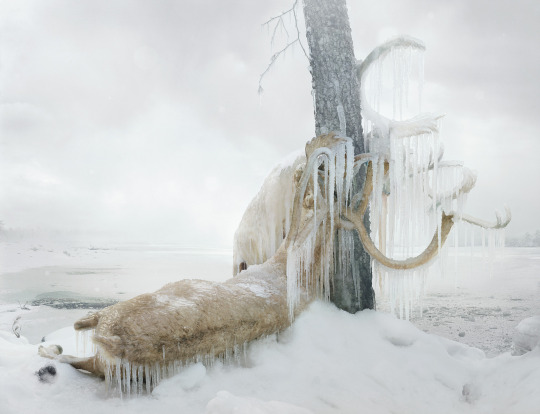
Simen Johan of Yossi Milo Gallery, Untitled #159 (2010) from the series Until the Kingdom Comes
Conversation between Proof of National Geographic & Simen Johan
PROOF: Your work shares some of the same subjects as traditional nature photography and might even be mistaken for it, but your conceptual approach is very different. Are you influenced by that kind of work?
SIMEN JOHAN: Some of my work emulates traditional nature photography, and there’s some intended irony in that. But there’s also sincerity, because I really do enjoy making beautiful images of nature. Beauty alone, though, doesn’t echo my experience of the world, which is more complex and multilayered, so in my versions of “nature photography” I also incorporate darker qualities.
PROOF: How does your process free you from the constraints of straight nature photography?
SIMEN: A few of my images actually are straight photographs, but because I’m more interested in what the world feels like rather than looks like, it’s rare that I see something that I want to simply photograph and not change at all. When constructing or manipulating images, I’m still limited by whatever raw material I’m able to capture on film, but I have more creative freedom to be imaginative.
PROOF: What are you trying to say that you couldn’t say in a straight photograph?
SIMEN: Nothing, really. I mean, I’m not a conventional photographer, the way a poet or a novelist is not a journalist, or a dramatic filmmaker is not a documentarian. The world as it appears is not enough of what I want to say. I like to create more than I like to observe.
PROOF: Is there a message in your project “Until the Kingdom Comes”? What themes are you playing with?
SIMEN: I work intuitively, and anything I might say about this work is afterthought. I do like to capture the world the way it appears when you look at things deeply and realize that things and situations are not what they appear. The familiar becomes unfamiliar and the boundaries between what’s real and unreal, or what’s beautiful and what’s threatening, begin to blur. The work is multilayered and open-ended, with biblical as well as political references scattered throughout, but ultimately it’s a visceral response that I’m after.
PROOF: What was your work like when you were first starting out as an artist? How has it changed?
SIMEN: I originally studied film, but financial constraints pushed me into photography. Before there was Photoshop, I was staging and collaging images and doing darkroom experimentation with chemicals and such. My technical abilities have evolved, the subject matter has changed from self-portraiture to children to nature, but the core essence of the work has pretty much stayed the same.
PROOF: Do you ever worry that someone who isn’t familiar with your work might mistake it for reality? Has that happened before?
SIMEN: It happens, and I like when it does, because it affirms how deceptive perception is. Reality is an illusion. Meaning is pliable. That being said, I hope there’s an experience to be had beyond the relevance of whether my work is real or not.
PROOF: What do you hope your work makes people think or feel?
SIMEN: I hope they’ll think less and feel more.
2 notes
·
View notes
Note
okayokay *shakes around braincell to think of questions*
what was your favourite subject in school
what's one thing that makes you happy
what your favourite fic that you've written
love <33
hi hi! thank you for sending these 🧡🧡🧡!
Non-traditionally speaking, photography! Back when I was in high school, we still had a darkroom to develop film and prints. I was one of the few people in my class that actually really cared about it, so my teacher always used to give me free access to do whatever I wanted in between assignments 😂 But if we're talking about core classes, English. I loved reading and writing from a very young age, so those classes always came most naturally to me.
Music. Absolutely music. And also comic con weekends spent with friends.
Definitely I'll Be Your Bright Side. That story is very special to me, and I'll always be so proud of it.
ask me three questions, anonymously or not!
2 notes
·
View notes
Photo
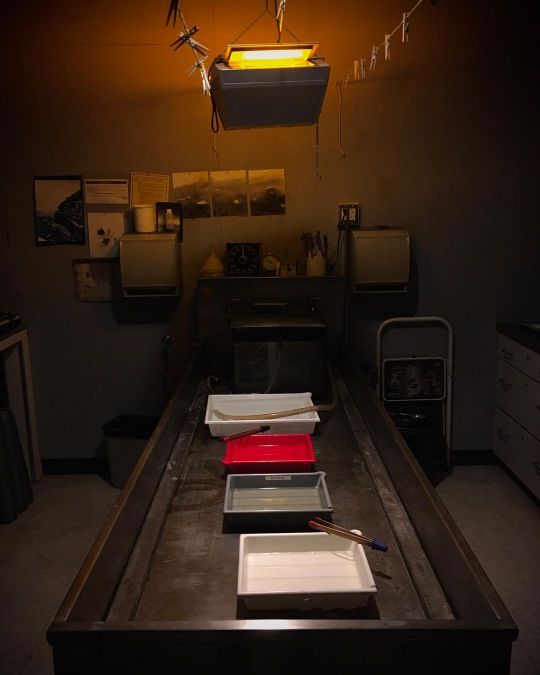
My love and career in photography started in the darkroom when I was nineteen years old as a darkroom technician processing advertising film and making BW prints of cars for sale at my local newspaper: The News-Messenger in Fremont, Ohio. This opportunity would prove fateful as the beginning of my life as a photojournalist. The darkroom is a sacred core memory for me and I am thrilled to be sharing my love of processing film and making silver gelatin prints by teaching ART130 BW photography this semester at CSUFresno. #traditionalphotography #darkroomdaze #developerstopbathfix #silvergelatinprints #makeprints #csufresno #f8andbethere (at Fresno State Dept. of Art & Design) https://www.instagram.com/p/Chcjt7mrehDo4hYO9W2pFgFa0ylqt5ue_7sjCs0/?igshid=NGJjMDIxMWI=
#traditionalphotography#darkroomdaze#developerstopbathfix#silvergelatinprints#makeprints#csufresno#f8andbethere
2 notes
·
View notes
Text
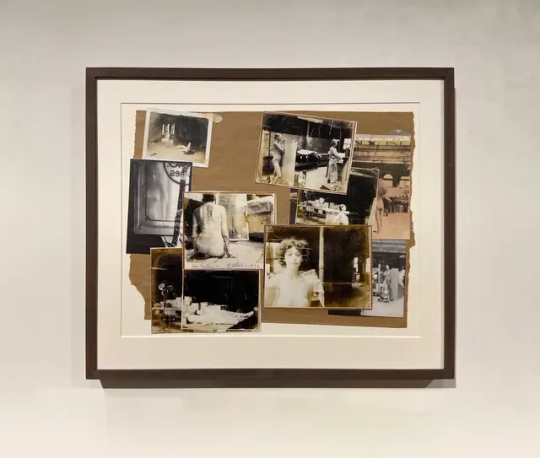
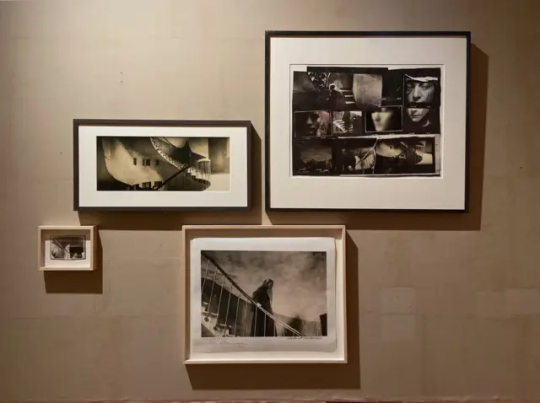

Impressions from Photocollage by Deborah Turbeville at Huis Marseille, Amsterdam
From the exhibition notes:
Turbeville’s artistic signature went beyond the photographic process. She continued her experiments in the darkroom in her studio, where the prints were torn, scratched, burnt or taped. Using this process she gave brand new prints a patina, which made the works appear to come from a different age. ‘I destroy the image after I’ve made it,’ she herself said. ’The idea of disintegration is really the core of my work.’
Photocollage runs until the 16th of June 2024.
#art#photography#photo collage#mixed media#collage#deborah turbeville#Stoneham#Massachusetts#usa#Huis Marseille#amsterdam#the netherlands
1 note
·
View note
Text
Enhancing Excellence The Significance of Professional Photo Retouching Services
In the age of digital media dominance, visuals play a pivotal role in leaving a lasting impression. Whether it's for personal use, business endeavors, or marketing campaigns, the quality of images can make or break the impact they have on the audience. This is where professional photo retouching services come into play, offering a transformative touch to photographs that goes beyond the capabilities of standard editing tools.
The Evolution of Photo Retouching:-
Photo retouching is an art form that has evolved significantly with the advancements in technology. What began as a manual process in the darkroom has now transformed into a sophisticated digital practice. Professional photo retouching services leverage cutting-edge software and techniques to enhance images, correct imperfections, and elevate the overall visual appeal.
Key Elements of Professional Photo Retouching:-
Color Correction:- Professional retouching ensures accurate color representation, correcting any discrepancies and enhancing the vibrancy of the image. This is crucial for maintaining a consistent and appealing visual identity, especially in branding and marketing materials.
Skin Retouching:- Portraits often require special attention to ensure flawless skin tones. Professional retouching can delicately address blemishes, wrinkles, and other imperfections while maintaining a natural and authentic look.
Background Enhancement:- Whether it's removing distracting elements, adding a touch of blur for depth, or completely changing the background, professional retouching can elevate the overall composition of an image.
Detail Enhancement:- Fine-tuning details such as sharpness, clarity, and texture can significantly improve the visual impact of an image. This is particularly important in product photography, where every detail matters.
Image Manipulation:- For creative projects or marketing campaigns, professional retouching services can go beyond basic enhancements to provide advanced image manipulation. This includes compositing, adding or removing elements, and creating visually striking effects.
Benefits of Professional Photo Retouching Services:-
Quality Assurance:- Professional retouching guarantees a high level of quality and precision, ensuring that the final images meet or exceed industry standards.
Time Efficiency:- Outsourcing photo retouching to professionals allows individuals and businesses to focus on their core activities, saving time and resources.
Consistency Across Platforms:- Maintaining a consistent visual identity is crucial across various platforms. Professional retouching ensures that images align with the desired aesthetic, whether for websites, social media, or print materials.
Competitive Edge:- In a visually saturated world, standing out is essential. Professional retouching gives businesses and individuals a competitive edge by presenting visually stunning and impactful imagery.
Professional photo retouching services have become an indispensable tool for individuals and businesses alike. From correcting imperfections to creating visually stunning compositions, these services elevate the overall quality of images, leaving a lasting impression on the audience. In a world where visuals speak louder than words, investing in professional photo retouching is an investment in excellence.
FOR MORE INFORMATION:-
Professional Photo Retouching Service
0 notes
Text
Unveiling the Digital Revolution: A Cinematic Odyssey through the Lens of Digital Film
In the annals of filmmaking, a transformative force has emerged, reshaping the way stories are told, and visuals are captured—digital film. The transition from traditional celluloid to digital technology marks a pivotal moment in the history of cinema, unlocking new realms of creativity, accessibility, and visual splendor.
The Birth of a New Era:
Digital film, at its core, is the marriage of cinematic artistry with cutting-edge technology. The transition from analog to digital has not only streamlined the filmmaking process but has also democratized an art form once confined to the hands of a select few. The cumbersome reels of film have given way to lightweight digital cameras, and the darkroom has been replaced by the digital editing suite, allowing filmmakers to weave their narratives with unprecedented flexibility.
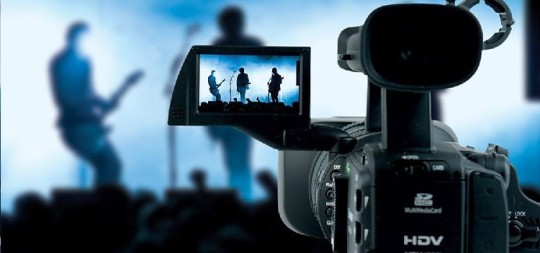
Democratization of Filmmaking:
One of the most profound impacts of digital film is the democratization of the filmmaking process. The barriers to entry have crumbled, enabling aspiring filmmakers to realize their visions without the financial constraints that plagued traditional filmmaking. Affordable digital cameras, accessible editing software, and online distribution platforms have empowered a diverse array of voices to contribute to the ever-expanding tapestry of cinematic storytelling.
The Canvas of Creativity:
Digital film provides filmmakers with an expansive canvas for creativity. The ability to capture, manipulate, and enhance visuals in real-time has revolutionized the art of storytelling. Directors can experiment with different angles, lighting, and effects on the spot, fostering a dynamic and collaborative creative process. The immediacy of feedback and the flexibility of digital technology have given rise to a generation of filmmakers unshackled by the limitations of analog filmmaking.
Visual Spectacles and Cinematic Marvels:
Digital technology has propelled cinema into a new era of visual spectacle. The integration of Computer-Generated Imagery (CGI) has enabled filmmakers to craft immersive worlds and breathtaking visual effects that were once relegated to the realm of fantasy. From mind-bending science fiction landscapes to realistic depictions of historical events, digital film has expanded the possibilities of what can be achieved on the silver screen, captivating audiences with its visual prowess.
Changing Distribution Dynamics:
The advent of digital films has not only transformed the filmmaking process but has also revolutionized distribution models. The rise of streaming platforms has disrupted traditional theatrical releases, providing filmmakers with alternative avenues to showcase their work to a global audience. Audiences now have the freedom to explore a diverse array of stories, breaking free from the confines of traditional cinema and embracing the convenience of on-demand viewing.
Challenges and Criticisms:
While the digital revolution in filmmaking has been met with widespread acclaim, it has not been without its challenges. Some critics argue that the tactile warmth of traditional film is lost in the precision of digital pixels, while concerns about overreliance on CGI and the potential degradation of storytelling persist. However, these debates underscore the ongoing dialogue between tradition and innovation that defines the ever-evolving world of cinema.
Conclusion:
In conclusion, the keyword "digital film" encapsulates a transformative journey that extends beyond the frames of celluloid. It represents a paradigm shift in filmmaking—an evolution that has not only made the craft more accessible but has also elevated the visual language of cinema to unprecedented heights. As we continue to navigate this digital odyssey, the magic of storytelling persists, thriving in the dynamic intersection of art and technology, inviting filmmakers and audiences alike to embark on new cinematic adventures
0 notes
Text
Gelatin silver print
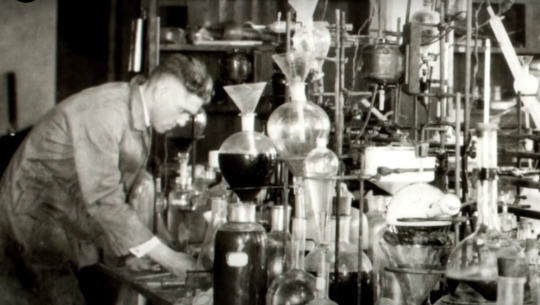
is the most commonly used chemical process in black-and-white photography, and is the fundamental chemical process for modern analog color photography. As such, films and printing papers available for analog photography rarely rely on any other chemical process to record an image. A suspension of silver salts in gelatin is coated onto a support such as glass, flexible plastic or film, baryta paper, or resin-coated paper.
This process requires shorter printing times than earlier printed-out processes such as salted paper prints and albumen prints. George Eastman’s introduction of flexible roll film and the Brownie camera revolutionized photographic practice and industry, putting photography into the hands of the masses for the first time. This process is responsible for all the black and white, color and motion pictures produced in the twentieth century with analog materials.
Resin coated (RC) photo paper is the most popular type of photo paper. It is available as a wet chemistry (darkroom) paper and inkjet paper. RC papers have a core of tree based paper coated on both sides with polyethylene resin, which is plastic. Red River Paper offers a variety of RC photo papers: 68lb.

Gelatin in water
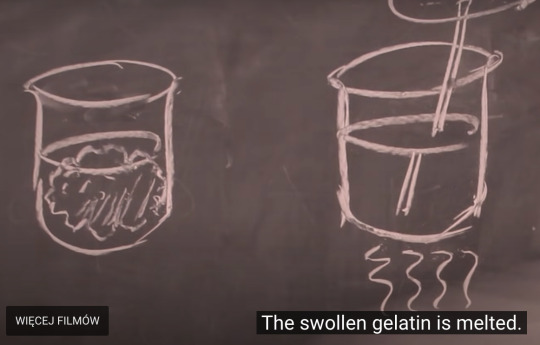

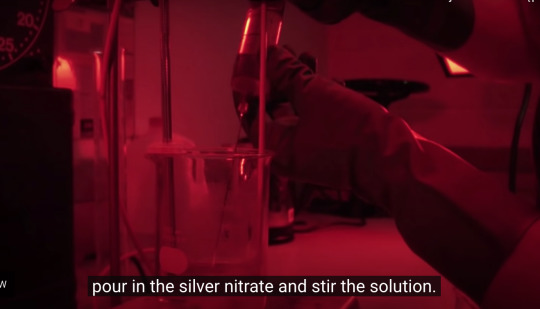
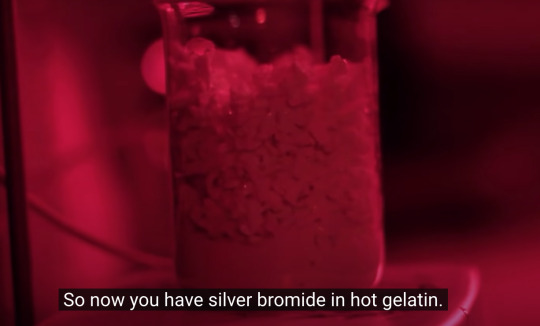
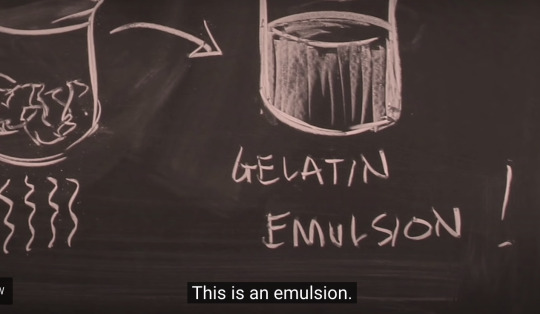

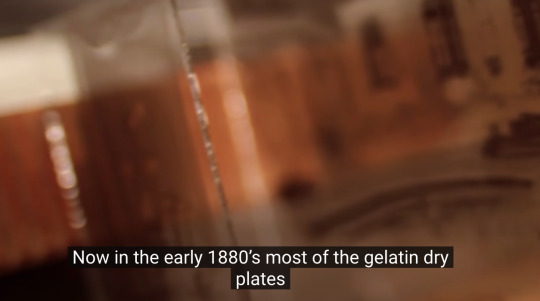
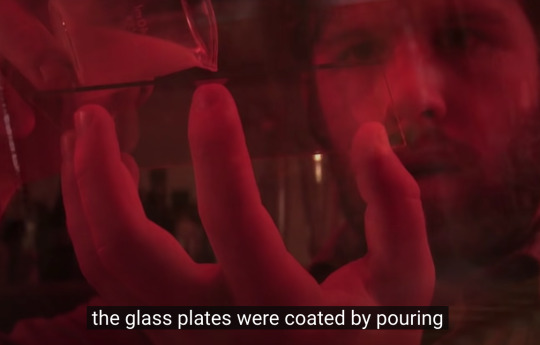

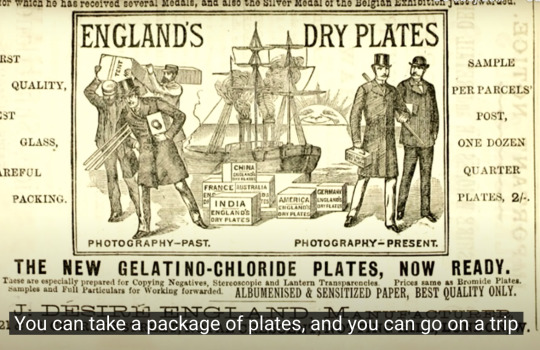
expose the plates, and develop in the dark room. The same emulsion was applied to the paper. The gelatin silver prints were introduced in the late 1800s. It's a developing process, not printing process.
At the beginning of the photography the film has to be the same size as the print you want. And that's why because they are contact printed.
As the photography progresses, we are able to enlarge the negative.
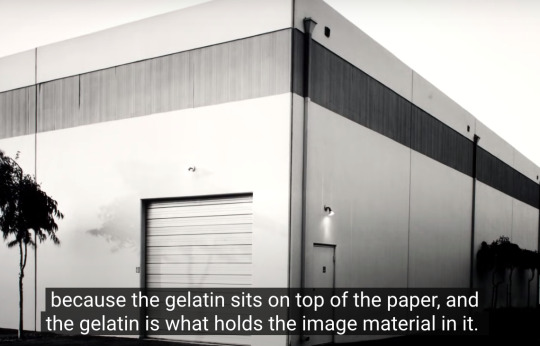
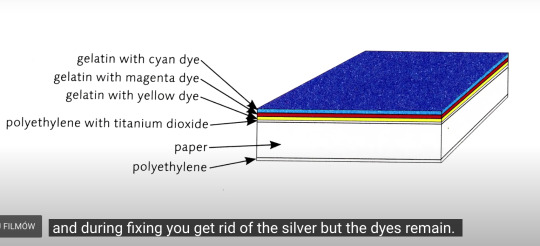
color photography
0 notes
Text
Antonio Velardo shares: Meet the Latest Dining Aesthetic: Darkroom-Core by Ella Quittner
By Ella Quittner
Restaurants across the United States are opting for red lighting as a way to sell intimacy, danger and, sure, food.
Published: July 31, 2023 at 02:15PM
from NYT Food https://ift.tt/ZSPaQli
via IFTTT
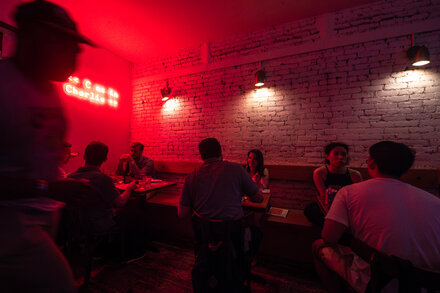
View On WordPress
0 notes
Text
Reading 2 - DADA & Photomontage
DADA is an international art movement that took place in the early 1900s, around the time of World War I. The word “DADA” sums up the movement perfectly; it could have many meanings, or no meaning at all! The core belief of DADA artists was that DADA art was anti-everything that the world culture was at the time and was approached as more of a state of mind. Things were simply art because the artist said so, and DADA art acted as a form of protesting the war and the political sphere at the time.
DADA artists created their “anti-art” by simply saying that things that occurred by chance or objects found in everyday life were now art. Cutting up newspapers, putting the pieces in a bag, shaking the bag up, and then pulling out random words in order was just one way that DADA poets created poetry! Photomontage was also created from the DADA art movement, which utilized cutting up newspapers and photos and creating new images out of the pieces. These photomontages often had satirical or ironic commentary about society and politics.
Surrealism was born from DADA and essentially ended the DADA movement. Performance art and postmodern art also stemmed from the DADA art movement, and DADA concepts are present in famous musician’s work like David Bowie and his experimentation with collaging lyrics and costume concepts. Many things that are considered “anti-art” today can thank the DADA art movement for introducing the concept into the art world.
One DADA artist that pushed the boundaries of photography and defined what a photograph could be and do is Man Ray. Ray worked with everyday objects, beginning by photographing a group of random objects found in his studio and later creating his famous “Rayograph” which was created when he turned on the light in the darkroom after messing up developing a portrait photo and accidentally imprinted the movement of a glass pane on to the developing photo. This sort of x-ray effect led Ray to combine multiple objects and chemicals to experiment with the exposures he created and pushed the boundaries of traditional black and white photography. Another photographer that came much later but still drew inspiration from the DADA art movement is photographer David Hockney. Hockney created cohesive scenes and landscapes using fragments of other photographs he had taken and pieced them together to form a single image. This use of collage helped redefine the photograph as something that could be created from many pieces instead of taking one single shot and calling it a day.
0 notes
Text

All New! - Your Lion Bite Word For Today!
On Over these past months, with my winnowing fork in hand, I separated the wheat and the chaff to prepare you for the new. I shook your heart to the core to bring what was hidden deep down to the surface. Your character has been developed and formed; now, you are ready to come out of the darkroom. I have enhanced, upgraded, and set a high standard while you were in the darkroom with me.
When opportunities come your way, ask for my wisdom and discernment before you accept. Not every door that opens is from Me. When the right opportunity comes, don’t forget the lessons that you have learned. The lessons that I have taught you are the stepping stones of your life.
Activation: Look up the Hebrew meaning of, "If" and explore this with The Holy Spirit. Ask him what he thinks, "If anyone is in Christ" means to Him.
2 Corinthians 5:17 (NIV)"Therefore, if anyone is in Christ, the new creation has come: The old has gone, the new is here!"
Revelation 21:5-6 (NASB)"And He who sits on the throne said, "Behold, I am making all things new." And He said, "Write, for these words are faithful and true." Then He said to me, "It is done. I am the Alpha and the Omega, the beginning and the end. I will give water to the one who thirsts from the spring of the water of life, without cost!"
Isaiah 51:1 (ESV)"Listen to me, you who pursue righteousness, you who seek the Lord: look to the rock from which you were hewn, and to the quarry from which you were dug!"
0 notes
Photo
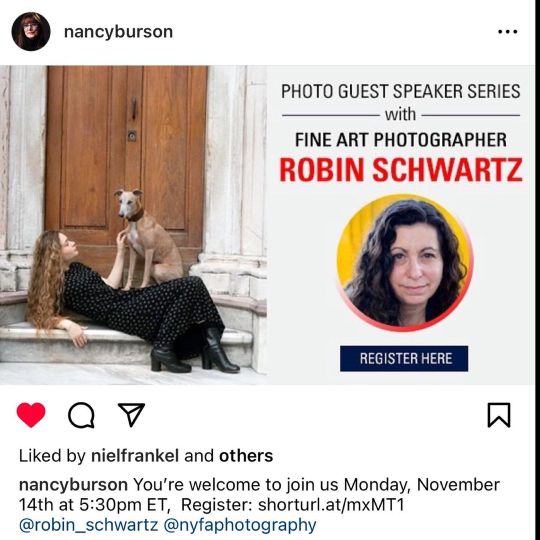
I am so pleased to be invited to ZOOM present my projects & publications to The New York Film Academy on 11/14, Monday 5:30 NYC time. If you can watch, register: shorturl.at/mxMT1 @newyorkfilmacademy @nancyburson I will present 2 keynotes, a 9 minute modified “INSPIRED” SVA Theater keynote and a 20 minute Amelia & the Animals keynote. I wish you all could wave to me to make me feel good, I am always a bit nervous. @curated_amelia @this.is.amelia know that my core animals Indie, Ruby, Sarah will be behind me on the couch, Zeke & Jack will stay on their bean bag, out of my ex-darkroom office. (at New York, New York) https://www.instagram.com/p/Ck6eEWLpLJo/?igshid=NGJjMDIxMWI=
0 notes
Text
Dxo photolab 1.0.2 crack

#DXO PHOTOLAB 1.0.2 CRACK PATCH#
#DXO PHOTOLAB 1.0.2 CRACK UPGRADE#
#DXO PHOTOLAB 1.0.2 CRACK WINDOWS 10#
#DXO PHOTOLAB 1.0.2 CRACK SOFTWARE#
#DXO PHOTOLAB 1.0.2 CRACK SOFTWARE#
Make images of files, folders, or software on the previous computer, and transfer to the next one. Download Name Age Type Total Files DxO FilmPack 6.4.0 Build 314 Elite Multilingual Portable: 10 days: Software: 743.20 MB: 1: icpJ5qZlFilmPack.6.rar: DxO PhotoLab 5.4. Three Easy Transfer WaysĬonnect two Windows laptops/PCs by network, and move your files, apps & accounts off the old PC to a new one Transfer via Image Files Thus, it speeds up the Windows system running, and keeps your PC working at its best. » dxo photolab plug-in for lightroom » dxo photolab 2 » dxo photolab 2.1 key finden » dxo photolab 2 kaufen » dxo photolab 2 » dxo photolab 4 gratis nederlands » dxo photolab 5. It’s widely applied to transfer apps stored on system drive to other disks, and make much room for Windows system. The complete DxO suite featuring a fully integrated workflow within DxO PhotoLab that is 100 compatible with Adobe Lightroom Classic. DxO PhotoLab 1.1.0 Elite is a great piece of software for your PC. DxO PhotoLab v4.1.0 Build 4467 (圆4) Elite Multilingual Portable.7z. DxO PhotoLab 1.1.0 Elite + Crack DxO OpticsPro Get DxO PhotoLab 1.1.0 Elite + Crack Free. /rebates/&252fdxo-photolab-elite-edition-12382.
#DXO PHOTOLAB 1.0.2 CRACK UPGRADE#
To upgrade your hard drives on an old PC, or replace a damaged disk, EaseUS Todo PCTrans can transfer applications locally between two disks, and move away large programs which take up much disk space, and slow down your PC. Adobe Animate CC 201716.0.1 (圆4) + Crack.rar.
#DXO PHOTOLAB 1.0.2 CRACK WINDOWS 10#
This PC transfer software can move applications downloaded on the previous computer to a new PC before your Windows 10 update.
#DXO PHOTOLAB 1.0.2 CRACK PATCH#
YouTube Video Downloader 5.9.1.0.2 Pro + patch is more than a Youtube downloader. Cet article vous a-t-il été utile Utilisateurs qui ont trouvé cela utile : 2 sur 20. DxO PhotoLab + patch Before you a new program PhotoLab from the famous. The download file has a size of 791.4MB.ĭxO PhotoLab has not been rated by our users yet.Upgrade to Windows 10? EaseUS Todo PCTrans makes it possible to perform an in-place upgrade in Windows 10 without reinstalling all apps. DxO PhotoLab (ESSENTIAL et ELITE) prend en charge les fichiers RAW des mêmes matériels, quelle que soit l’édition que vous choisissez. ĭxO PhotoLab runs on the following operating systems: Windows. It was initially added to our database on. The latest version of DxO PhotoLab is 5., released on. It was checked for updates 220 times by the users of our client application UpdateStar during the last month. Unlike other programs, this one is based very much on the parameters of the photographic equipment and thanks to this the parameters of the processing with its use are very well adjusted to the specific photos.ĭxO PhotoLab is a Shareware software in the category Miscellaneous developed by DxO. Take control on every aspect of your photos: effectively remove noise, get rid of light constraints, recover color details, apply sophisticated. Recommended system configuration: Intel® Core i7 4th generation or better, or AMD Ryzen. Produce RAW and JPEG images with the best image quality, effortlessly: DxO PhotoLab provides a complete set of smart assisted corrections that you can manually fine-tune at any time. a programme for processing photos taken with a digital camera, which enables the whole process, from selecting the best photos from a session, through correction and retouching, to saving them in a chosen size and format. DxO PhotoLab lets you preview text- or image-based watermarks before you export your photo and allows you to make adjustments within the same editing space. DxO PhotoLab is a professional electronic darkroom, i.e.

0 notes